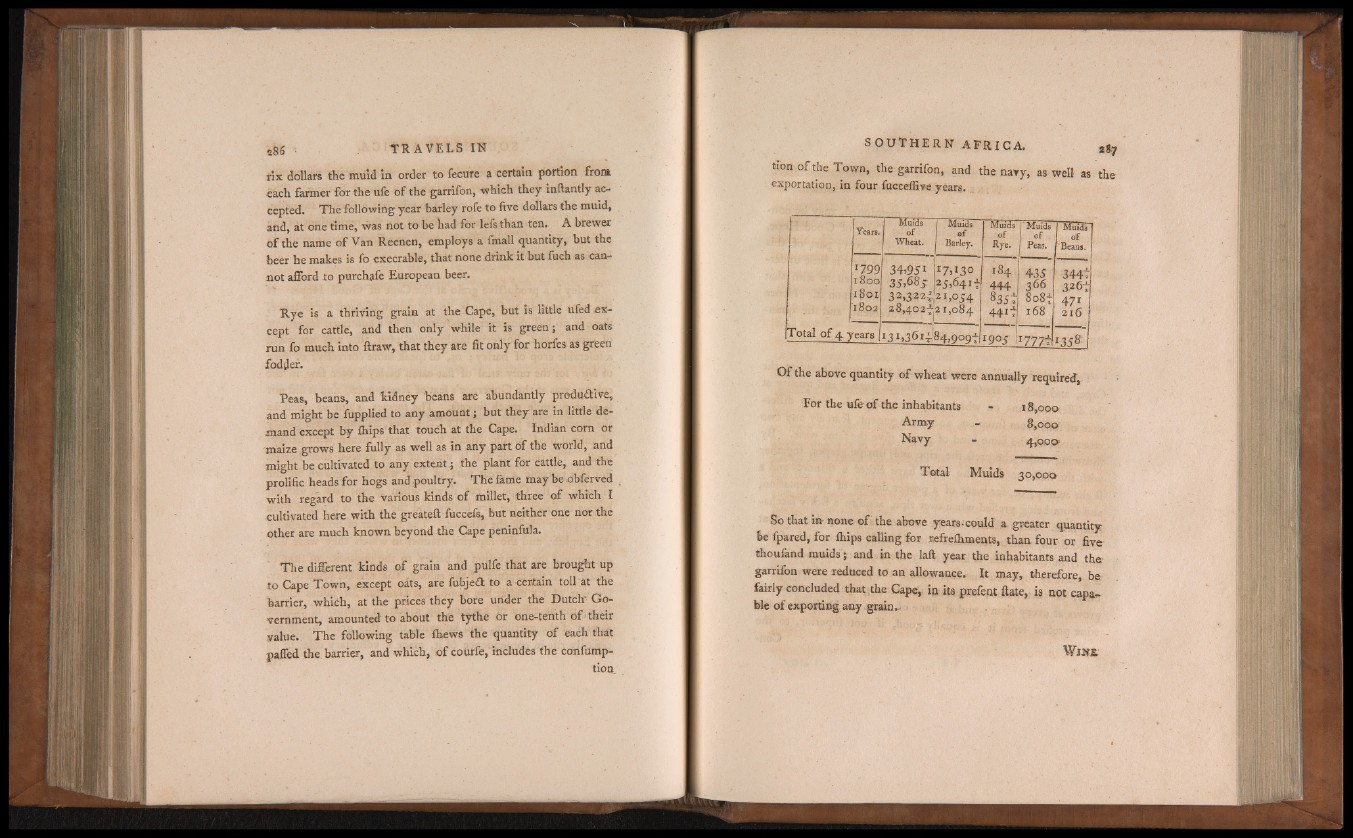
rlx dollars the muid in order to fecure a certain portion from,
each farmer for the ufe of the garrifon, which they inftantly accepted.
The following year barley rofe to five dollars the muid,
and, at one time, was not to be had for lefs than ten. A brewer
of the name of Van Reenen, employs a fmall quantity, but the
beer he makes is fo execrable, that none drink it but fuch as cannot
afford to purchafe European beer.
Rye is a thriving grain at the Cape, but is little ufed except
for cattle, and then only while it is green ; and oats
run fo much into ftraw, that they are fit only for horfes as green
fodder.
Peas, beans, and kidney beans are abundantly produdive,
and might be fupplied to any amount j but they are in little demand
except by ihips that touch at the Cape. Indian corn or
maize grows here fully as well as in any part O f the world, and
might be cultivated to any extent ; the plant for cattle, and the
prolific heads for hogs and poultry. The fame may be obferved
with regard to the various kinds of millet, three of which I
■cultivated here with the greateft fuccefs, but neither one nor the
other are much known beyond the Cape peninfula.
The different kinds of grain and pulfe that are brought up
to Cape Town, except oats, are fubjed to a certain toll at the
barrier, which, at the prices they bore under the Dutch* Government,
amounted to about the tythe Or one-tenth of their
value. The following table fliews the quantity of each that
palled the barrier, and which, o f courfe, includes the confumption
tion o f the Town, the garrifon, and the nary, as well as the
exportation, in four fuccefiive years.
Years.
Muids
o f
Wheat.
.
. Muids
of
Barley.
Muids
o f
Rye.
Muids
o f .
Peas.
I Muidal
Beans.
i
1799
1800
i8or
1802
34 »951
35,685
32,332^
28,402-*
25,641t
21,054
2r,o84
184
444
835t
44Jt
435
366
8o8t
168
3447
3.26t
471
216
Total of 4. years ïJ 1,36*^84, q o Q - f I9°5 r777t i 358i
Of the above quantity of wheat were annually required,
For the ufe of the inhabitants - 18,000
Army - g,ooo
Navy - 4,000
Total Mutds 30,000
So that in none of the above years-could a greater quantity
be fpared, for Ihips calling for r>efre£hments, than four or five
thoufand muids; and in the laft year the inhabitants and the
garrifon were reduced to an allowance. It may, therefore, be
fairly concluded that the Cape, in its prefent ftate, is npt capable
of exporting any grain.-